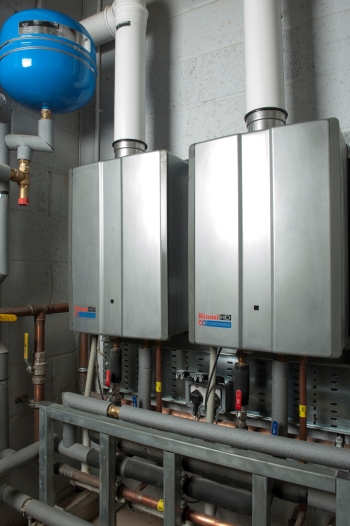Chris Goggin, Associate Director, looks at the advent of energy islands which could be set to be a major part of the drive to decarbonisation in both the international arena and the UK.
Decarbonisation of the industrialised world’s fuel supply is acknowledged as being the over-riding priority in tackling climate change. Industry and governments across the globe are currently working on advanced plans to alter the composition of fuel to ensure a carbon free future.
This requires a diversification of fuel production and distribution which does not have influence on fuel supplies that allow the global economy to operate and grow.
On mainland Europe in countries such as Germany, France, and Italy there has been a surge in demand and production of renewables. Denmark has heavily invested, both financially and ethically, in the idea of purpose built ‘energy islands’, floating in either international seas or the territorial waters of sovereign countries.
An energy island is easily explained. It is a manufactured “island” designed with the purpose of generating and distributing power through renewable recourses situated and gathered out at sea. The concept of a floating island or, “Ile Flottante” was first recorded and introduced by Commander Philippe Tailliez of the French Navy in the early 1950s.
Energy islands, said Michaelis, will produce and distribute energy that stems from four separate avenues:
This will vary site to site. However, considering wind conditions off land, maximising wind energy should not pose a problem. 6 mills at varying heights spread across a 600-metre platform should be able to generate 18MW at peak.
This is site dependent but utilizing specifically designed enabling technology can generate between 2 and 10 MW.
This is better suited to deeper, rougher seas. The average wave energy profile of the North Sea is 50kW compared to 15kW in tropical waters. Wave energy has the ability to contribute 6MW.
This is the last natural source that can feed the energy island. In terms of production, it is also the most active. A wide range of solar collection systems can be considered for use. “Power Tower” operations in tropical latitudes can generate collection efficiencies of 75% and produce a secondary conversion ratio to electricity of 40%.
To put this energy generation into perspective it has been cited that by multiple sources that 1MW could power anywhere between 400 and 700 homes.
A separate system dealing in Hydrogen conversion will also be designed and situated on each energy island. A hydrolysis plant is required to produce Hydrogen, another source of green fuel which can be produced via electricity generated by wind out at sea. D. Michaelis further adds: “Although some of this generated power will be used as electricity, a large proportion can be transformed into hydrogen fuel by electrolysis, with an efficiency ranging from 80 to 90%. Hydrogen is a clean fuel, combining with oxygen when “burnt”, to give water or water vapour as its by-product, creating no atmospheric pollution, and therefore considered by many as the Fuel of the Future.” (D. Michaelis).
Denmark has begun planning on installing two artificial energy islands in the North Sea which will triple the country’s current installed wind capacity. The main energy island under planning will produce and provide 3 Gigawatts of energy rising to 10 over time. An area situated 80 km (50 miles) west off the coast of Jutland has been identified as a prime location for its wind and rough sea.
An additional and smaller energy island is also being planned off Bornholm in the Baltic Sea, to the east of mainland Denmark, which eventually will produce 2 Gigawatts of cleanly sourced power.
This project will prove to be the biggest construction project undertaken by the Danish government with initial estimations amounting to around £24bn.
Its projected size will be the equivalent of 18 football pitches – 120,000sq m. Further plans to expand its size by 300% are being discussed by the relevant parties. This site will provide the floor space to accommodate 200 giant offshore wind turbines which will work with the coastal wind to power 3 million households. Green hydrogen will also be mass produced.
The Danish state will claim 51% of the ownership of the energy island leaving free a sizable percentage which is hoped to attract private financial investment.
The Danish climate minister, Dan Jorgenson, has recently been quoted referring to the idea that Denmark could produce too much energy to use themselves, opening up the possibility that neighbouring countries could also benefit.
Two smaller UK energy islands are currently being discussed: one in Cornwall, the other in Anglesey. Both are hoping to generate cleaner forms of fuel production for domestic and commercial use, as well as provide a scope of extra vocational options made available through new industry. A case study carried out by researchers at the Major Energy Delivery Programme estimate that over a period of 15 years the North West Wales regional economy could receive up to £2.5 billion with extra employment accounting for 8.6% of Anglesey’s expected GDP (Hall, Gareth).
Man-made energy islands possess the capability of syphoning off natural recourses to transmute into domestic and commercial power through a range of innovative and diversifying practises; the generation of electricity, hydrogen and oxygen is produced in quantities vast enough to power entire countries with fuel that does not cause levels of harm to the planet.
The installation and maintenance of energy islands will create new innovative industries and job opportunities that will aid further expansion of the local economies. If Denmark’s approach proves successful, energy islands will become a primary source of greener fuel production and economic growth.
